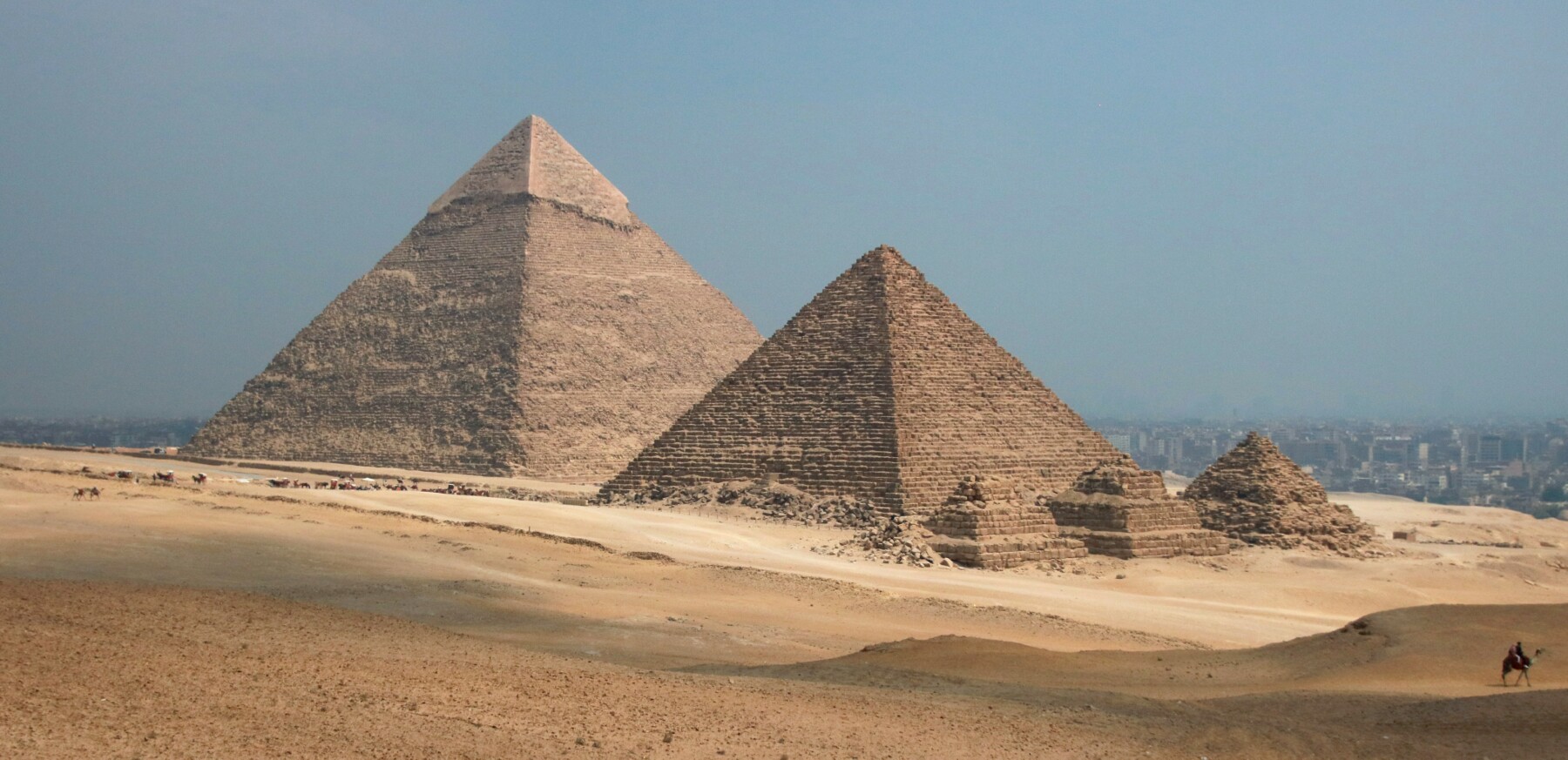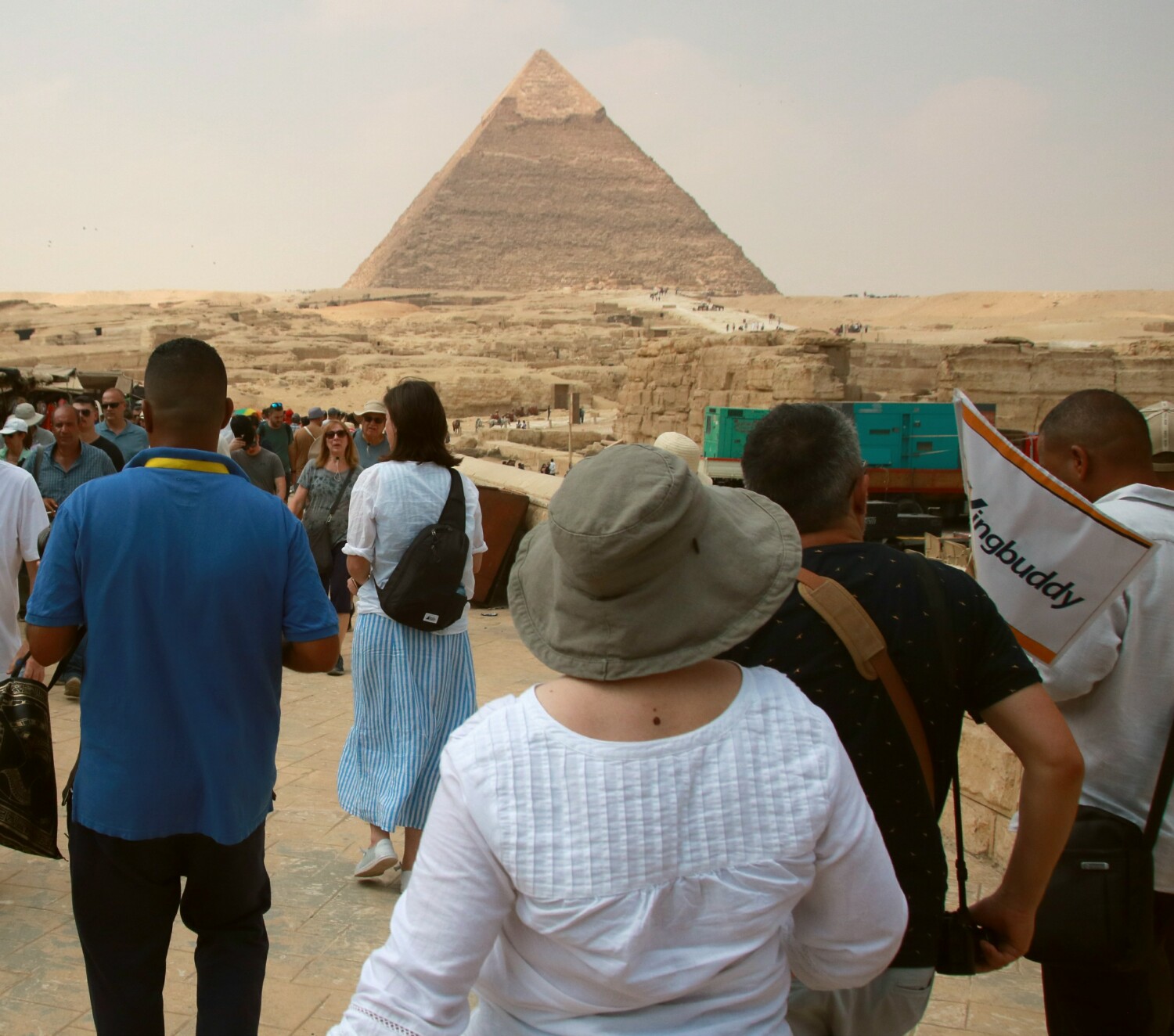Egypt: Day 2
September 17, 2022
|

Above: Pyramid of Khafre with it's smooth limestone top, the smaller Pyramid of Menkaure, and three smaller Queen's pyramids, from the Western Desert.
1 to 4 the group walking towards the Great Sphinx, which sits in front of the Pyramid of Khafre, built around 2500 BC.
Picture 4 shows a view of the neglected Sphinx area from the late 1800's, much of it covered over with sand.
5 shows the ruins of the Temple of Khafre, covered in sand for centuries, until recently.
6 to 8 show close-ups of the Great Sphinx. Some believe the Sphinx water erosion hypothesis, contending that the Great Sphinx of Giza and its
walls eroded primarily due to ancient floods or rainfalls, attributing their creation to Plato's lost civilization of Atlantis over 11,500 years ago.
Egyptologists and geologists have rejected the water erosion hypothesis and the idea of a much older Sphinx, pointing to archaeological,
climatological and geological evidence that does not support the hypothesis.
9 and 10 show mastabas (type of ancient Egyptian flat-roofed tomb constructed out of mudbricks) and rock cut tombs.
|

|
|